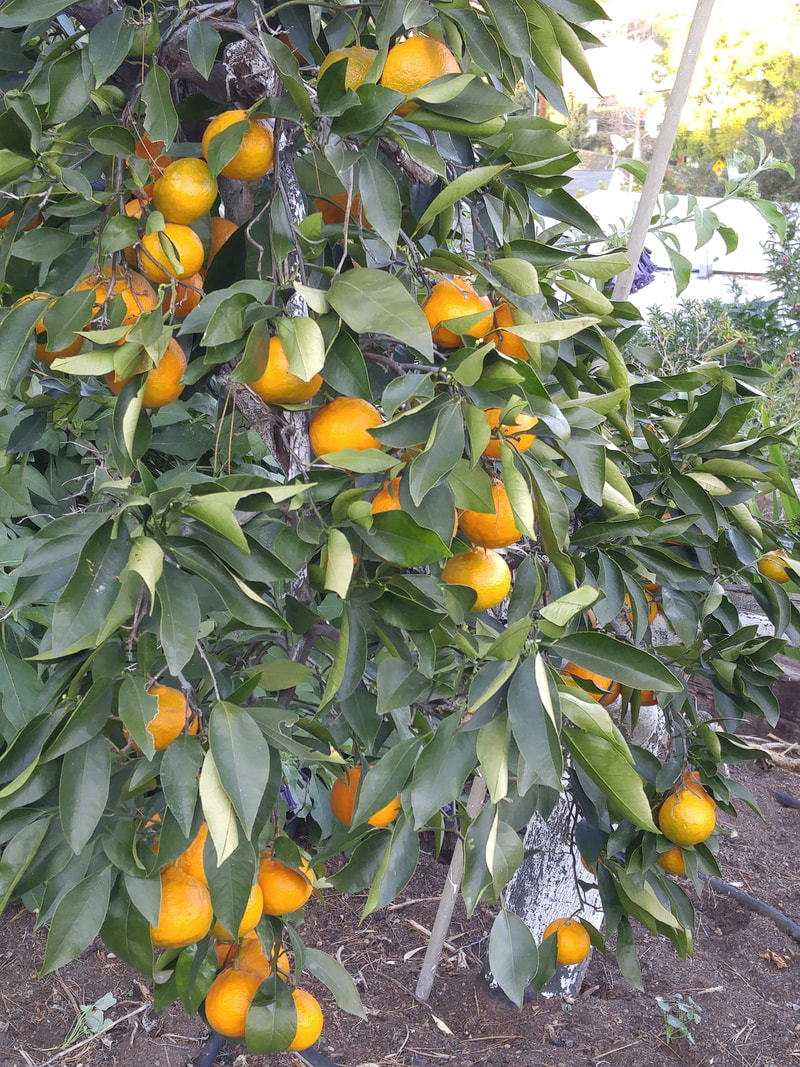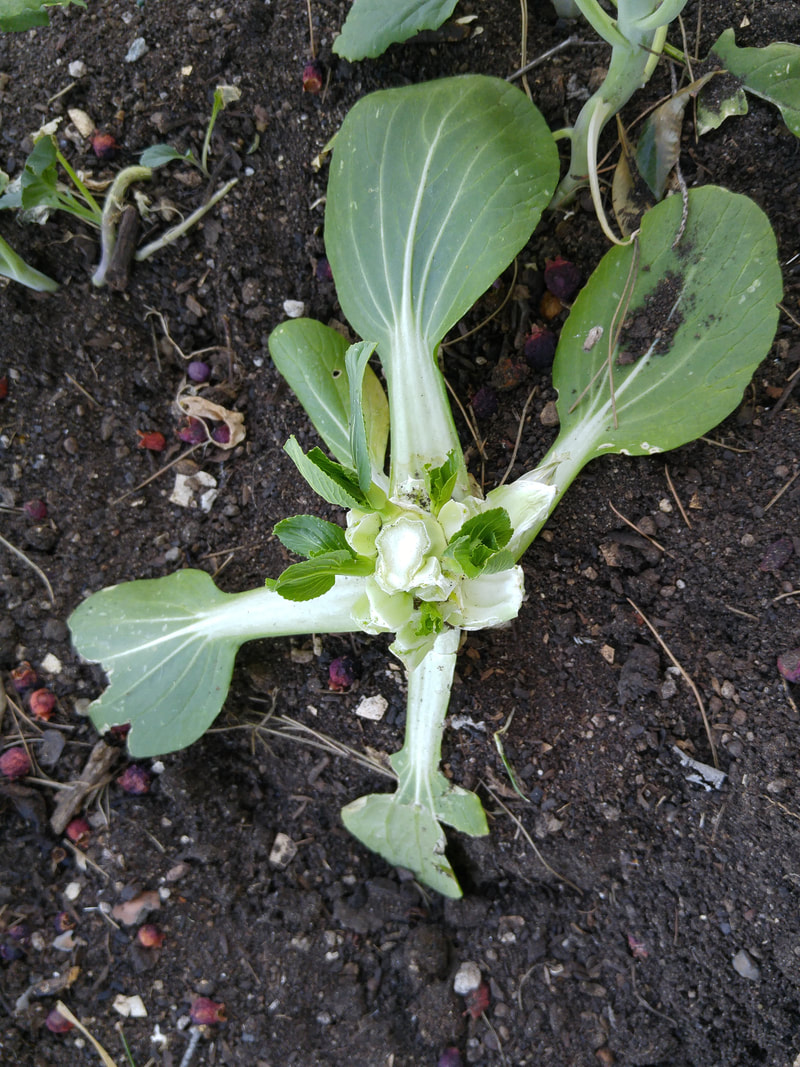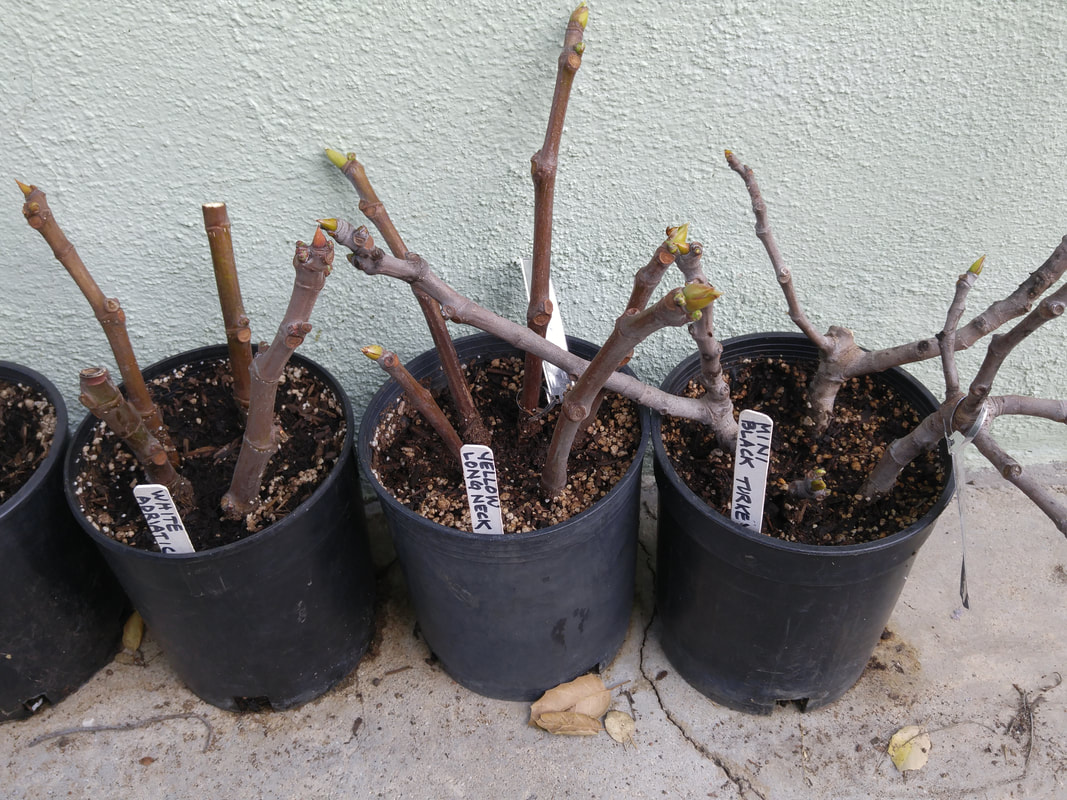| | The flowering pear trees on my route to the post office started blooming three weeks ago and are now losing their last petals. Usually – if any timing can be considered usual in the gardening world – these trees begin blooming in mid- to late-February. So, there’re a good month ahead of themselves. Since January and February are typically – again, that usualness – our rainiest months, perhaps we’ve be blessed with as much as we’re going to get this winter. Either way, we may have begun our march on to warmer and dryer weather. Consequently, our Spring garden tasks need to move into a higher gear. Here’re some ways to proceed. Harvesting I’m giving up the idea of transplanting the batch of cool-season bok choy and other “oriental” greens that I’d scattered and that came up months ago, in favor of harvesting them in place. The patch looks jumbled and unruly, but of course this has no effect on the greens’ flavors. I snip off the top several nodes’ worth of foliage, leaving the bottommost ones to develop new shoots from each of the remaining nodes. Luckily, these greens continue to be sweet and tender even as they develop their flowers and put up their seed stalks – called “bolting” – so I can harvest as long as there are leaves to pick. The lettuces and spinaches continue growing nicely. Hopefully the warm days but cool evenings will keep them putting out just leaves so I can continue harvesting sweetly-tasting greens for much longer. When nighttime temperatures rise much more, they too will put up their seed stalks and turn the leaves bitter. Cool-Season Seeding and Transplanting I’ve always found it wise to plant more of these greens, either by seeds or transplants, as my Fall-sown and -planted plants begin to bolt. The older plants have gone through the “cold” of winter and so are bolting now. But the newer plants will continue growing their tender leaves until the weather gets too hot and then they’ll bolt. So, with this new group I can continue harvesting for perhaps another month or two beyond the first batch. But, because we don’t know what the weather will do – that part is definitely a certainty – putting in another batch of seeds and plants is a guess and hope that we’ll get enough of the new food value to have made the effort worth it. Hold Off On Warm-Season Seeding and Transplanting Tomatoes are the ONLY – emphasis ONLY – warm-season plants that will thrive if planted now. Every other warm-season vegetable – including bean, cucumber, eggplant, melon, pumpkin and squash -- has been “forced” in warm greenhouses in the hopes of enticing eager gardeners to purchase. Until nighttime temperatures are closer to 55 or 60 degrees, they’ll just “pout” in the soil and never really recuperate once the soil has warmed. Better to wait a month to purchase and plant them. Fruit Trees Are Blooming The sap has begun to move in fruit trees, pushing the buds to sprout leaves and blossoms. Cut only branches that you really must for walking space or other reasons. Fig trees may have baby figs – called “bebra” crop – as well as new leaves emerging. These are developing on last-year’s brown branch growth and will ripen in a couple of months but be a smallish crop. The main crop will set in a couple of months on this year’s green branch growth and ripen in July and August. I’d felt bad a couple of weeks ago when I trimmed a lot of long branches off of my mulberry tree, since I could already see some of the blossoms and was worried that I’d reduce my ultimate crop. No fear, now that I see how very many ripening fruits are on the tree. Whew! The same thing may occur to you as you see all the blossoms and then tiny fruits on your fruit trees. So, don’t remove any of the blossoms – even on the clusters on apple trees – in favor of waiting until the tiny fruits are the size of a dime before you thin them. That’s when you’ll see how many fruits you do indeed have to contend with, and how much space you need to allow each fruit to develop into full size. February Garden Tasks For more garden tasks to consider this month, go to February Monthly Tasks. |
|
0 Comments
|
Categories |


















 RSS Feed
RSS Feed